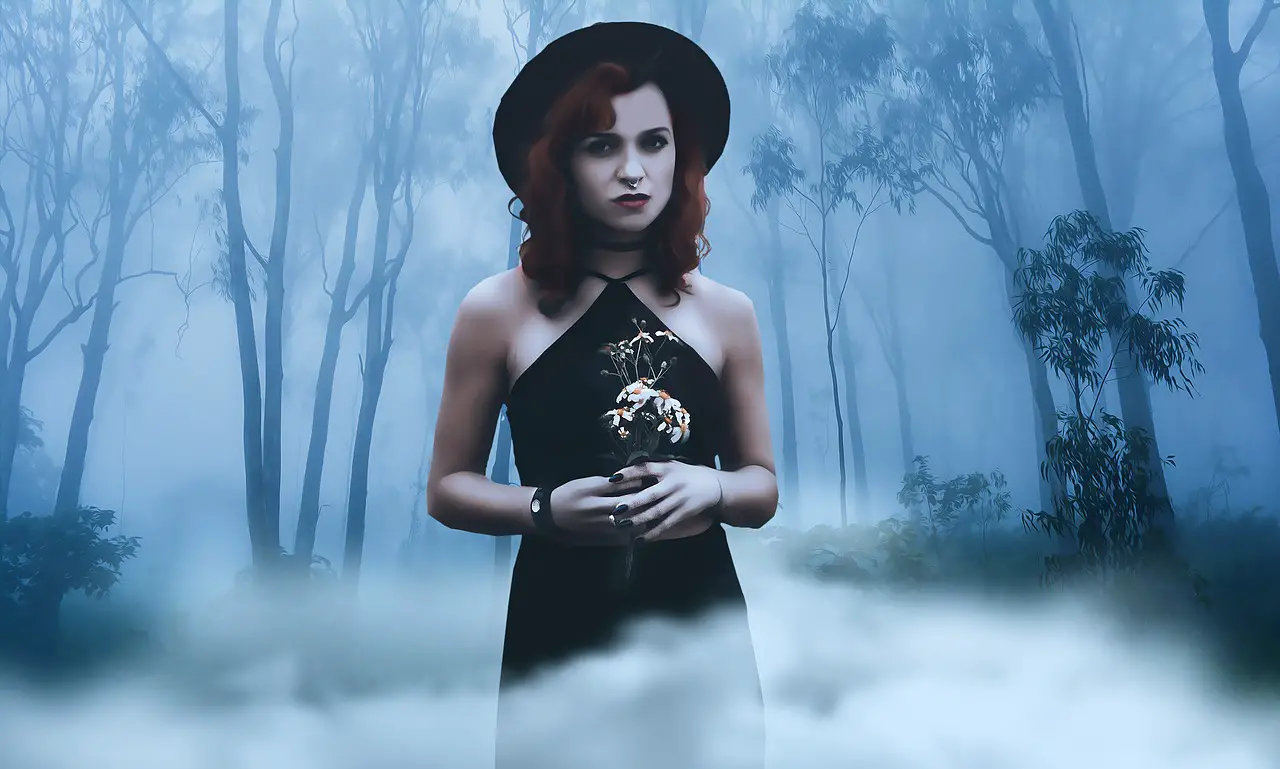
Gothic classical music
Mozart’s Don Giovanni may have been an early example of the Gothic in music, but it was by no means the last. The genre has continued to cast its shadow on Western art music’s history right up to the present day. From Berlioz’ Symphonie Fantastique through Stravinsky’s Histoire du Soldat to Penderecki’s Threnody to the Victims of Hiroshima, musicians have continued to explore the potential of the Gothic. Many of these pieces are more macabre than genuinely Gothic, and most owe as much to Romanticism as they do to anything specifically Gothic.
Gothic music today
In recent years, composers have been reaching for their knives once more. The late Richard Rodney Bennett found inspiration for his opera The Mines of Sulphur in a short story by M.R. James. The work premiered at the Buxton Festival in 2004. The American composer John Zorn has also written a series of pieces inspired by M.R. James’s work, including ‘The Dreamer in the Tomb’, which was premiered by the Kronos Quartet and is featured on their 2006 release John Zorn: A Dreamer in the Tomb.
In 2007, the first-ever gothic opera—a full-blown gothic horror story—was premiered at the University of Huddersfield, directed by Christopher Cowell and composed by Jonathan Dove. The Phantom of the Opera had come to Huddersfield! Initially performed as part of the university’s Gothic: In Darkness Reflected festival, it was brought back again in November 2008, this time at the Alhambra Theatre in Bradford.
In 2008, the Dutch writer/director/composer team of Dennis Gerrits and Martijn Hillenius brought their adaptation of Edgar Allan Poe’s The Fall of the House of Usher to the stage. It was performed as part of a short-lived Dutch festival called ‘Gothic’, which took place in The Hague during July 2008. The festival featured a wide variety of events, including concerts, lectures and a series of short films.
The Fall of Usher’s House was performed at the Theater aan het Vrijthof (theatre in the square), an intimate venue holding only 150 people. As with many European festivals, this one was a mixed arts event spread across several venues within walking distance of each other. While some events were held in established theatres like this one (which dates back to 1827!), others took place in more unconventional venues such as a church hall or a former psychiatric hospital.

The Fall of the House of Usher was performed by an ensemble from Amsterdam that included four singers and three instrumentalists who played flute, oboe and piano/organ onstage. It had been adapted for stage performance by Martijn Hillenius from a radio play that had been broadcast on Dutch National Radio three years earlier. Since then it has been performed on several occasions: at an international festival in Rome (2009), as part of another multi-arts festival called Donaufestival (2010) near Vienna and again at a gothic festival (2010) in Ghent, Belgium.
In addition to Phantom and The Fall of the House of Usher, other examples of Gothic music are being performed around Europe regularly. In Germany, there is a long-established recurring gothic concert series entitled Sonderzug nach Gothik (Train to Gothland), which features music from Cradle of Filth to John Zorn to Nox Arcana! And there are similar festivals scattered around European countries such as France and Spain. All feature music inspired by Gothic literature or films; all celebrate both gothic culture and its music; all are well worth checking out if you happen to be travelling around Europe!
This then is only a very brief snapshot into some recent developments in Gothic culture and art music inspired by it. Like so many things concerned with gothic literature and film, it remains somewhat fragmented and isolated from mainstream culture—but that’s what makes it so fascinating! Just like Poe’s ‘Manuscript Found in a Bottle’ or Emily Brontë’s Wuthering Heights: it may not be for everyone, but if you like your horror dark and your music even darker…then go ahead!
Next, we are going to look at seven pieces of Gothic Classical Music. We have taken a look at the Best Headphones for Classical Music if you need just the right pair of headphones to enjoy these.
7 Piece of Gothic Classical Music
1. Berlioz: Symphonie Fantastique
The opening to Hector Berlioz’s Symphonie Fantastique is probably the most famous piece of music in this genre. It was written when the Gothic was still very much in vogue in literature and painting. The piece is frequently performed in concert halls. Several successful recordings were made of it, including those by Leonard Bernstein, Sir Colin Davis, John Eliot Gardiner and Naxos itself (see below).
2. Liszt: Totentanz for piano
The French-Hungarian composer and pianist Franz Liszt composed many pieces that were considered to be Gothic in nature at the time. However, today he is more known for his virtuosity than anything else. Perhaps his most famous piece in this genre is Totentanz, which translates as ‘dance of death.’ Like Berlioz’s Symphonie Fantastique, it is a choral piece based on the danse macabre from the 14th century.
3. Schumann: Genoveva
Robert Schumann’s opera Genoveva (1850) is considered the pinnacle of this composer’s career and was written when he was at his powers’ height. It was a massive success in the 19th century, but today it is only rarely performed. It has not had any recordings made of it for many years, despite an excellent recording of John Eliot Gardiner’s overture having been made some years ago.
4. Berlioz: Requiem
The Requiem by Hector Berlioz is an extensive choral work that was written at a time when there was a vogue for such pieces and that in part parodies the form. While there is no doubt many who find this piece hugely entertaining, many find it very difficult to listen to. However, it remains one of Berlioz’s best-known compositions and has recently been re-released in two new recordings made by Naxos (see below).
5. Liszt: Totentanz for organ
The German-Hungarian composer Franz Liszt also composed many organs works in the Gothic style. The most famous of these is his Totentanz, which is based on the same medieval danse macabre that inspired Berlioz’s work of the same name (see above). Liszt wrote his Totentanz for organ in 1849, and it has been recorded by more than one organist, including Pierre Cochereau and John Scott Whitely. It is thought to be one of Liszt’s most challenging organ pieces. The recording by Pierre Cochereau can be heard below.
6. Berlioz: Les Nuits d’Ete
This collection of nocturnes is by the French Romantic composer Hector Berlioz and was composed in 1841, when the Gothic was still a popular artistic genre. It is a set of six works for solo piano and orchestra, inspired by the summer nights that Berlioz enjoyed in the town of Fontainebleau, where he spent much of his time in later life. The recording below features the pianist Roberto Prosseda playing the second nocturne, ‘Sérénade’ (‘Serenade’).
7. Berlioz: La Damnation de Faust
Hector Berlioz’s opera La Damnation de Faust was composed in 1846 when the composer was at the height of his powers. It was hugely successful in its day, but has not been performed very often since then, perhaps because of the difficulties in staging it. It is considered by many to be Berlioz’s masterpiece and has had numerous recordings made of it over the years, including John Eliot Gardiner’s (see below).
